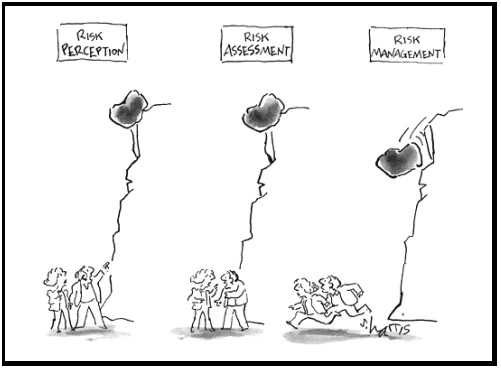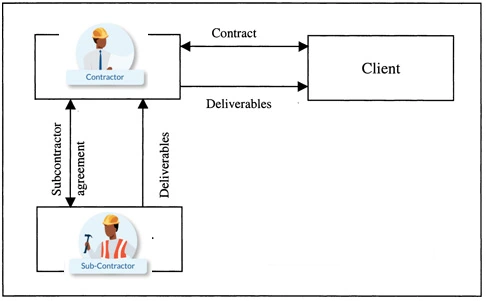Why do IT projects fail? already illustrates how three fundamental reasons related to Scope, Schedule, and Cost trigger project failure. Nevertheless, from a practitioner’s point of view, a project failure may be attributed to each of the project management knowledge areas. Project management knowledge areas touch upon all different aspects of the project life cycle. Poor management of any particular area has a bearing on the final result, the success, and failure thereof.
Poor Stakeholder Engagement: The economics, market trend, compliance requirements, product demand, competition, technology, funding situation, organisation management and internal politics, and business objectives changes over a period of time. These issues have the potentials to forestall the project and its continuity in a long run. The stakeholders, who sponsor the project, support it both in good and bad weather provided they have coherent engagement. Poorly engaged stakeholders wash their hands of the project when it goes through a bad patch. The project sponsors ensure regular funds flow to the project ensuring its continuity, once the funds dry off the project dies a natural death. Hence, stakeholders should be handled with much care with the following three (3) objectives: Keeping stakeholders involved and informed, Building consensus among stakeholders on conflicting ideas, and managing stakeholders’ expectations.

Stakeholder Management
Hopeless Communication: Communication is the most important skill for any individual in general and a project manager in special to become a successful person. Project management is the art of managing a wide range of people with absolutely diverse backgrounds, experience, skill-set, interests, and objectives, who have come together for a common goal. The uniqueness of each individual participant makes communication management a more delicate affair. The kind of project update the sponsor needs is fundamentally different from what the project team wants to know or the end-users should know. The problem crops up when there is either poor or lack of communication; over a period of time this poor communication leads to confusion, uncertainty, speculation, and unfounded doubts about the project. This is never a piece of positive news for any project when key stakeholders cast aspersions on the project which paves way for its eventual failure. So there must be a well laid out communication plan; communications must be concise, clear, complete, simple, relevant, regular, and tailored for the recipient and finally, there must be periodic review of communications.

Communication Management
Conservative Risk Planning: Pessimism for Opportunities and Optimism for Risks. The project manager must be a little radical while planning impending risks on the project. After identifying all risks they must be open to both qualitative and quantitative analysis, evaluated based on the probability of their occurrence and the kind of damage they will have on the project if they occur. Overlooking risks and proceeding without a proper Risk Response Plan in place to pre-empt them often takes the project a beating with unexpected results and possible project failure. Even in spite of very good risk planning, unexpected risks still can’t be ruled out altogether; a special-purpose contingency fund is set aside to handle such an unexpected occurrence.

Risk Management
Pathetic Quality Assurance: The purpose of quality assurance is to guarantee what has been promised is delivered. The process of application development is the transformation of a raw idea into a business application. The project team positions various quality gates at different levels to make sure the very idea remains intact in the final delivery. Slackness in the quality gates leads to defect repair, major rework, schedule slippage, cost overrun and stakeholder dissatisfaction, and rejection of final delivery.

Quality Management
Resource-lessness: Delivering a project right on time always depends on how efficiently the project manager engages the right resources to work on the project. Since hiring the right experience and skill-set is an organisational challenge the PM is quite often asked to manage with what he has. In this case, deliverables are subject to both poor quality and schedule slippage.

Resource Management
Indiscretion in Procurement: The decision of Buy or Build always occupies both business and IT company mindscape. The IT company will always be bound by the terms of the contract and responsible to the business for the final delivery. In the entire scale of work, many small components are outsourced, and or various tools and technologies are procured from third parties. Such dealings of the IT company will always remain opaque to the business. Sometimes, the performance of the third-party vendors, might not be up to mark, jeopardising the final delivery or entire project outcome. Immaculate assessment of subcontractors, fallback plan, performance guarantee, and other legal provisions are put in place to ensure both successful delivery and absorb any negative impact thereof.

Procurement Management
Inefficient Planning and Control: This category covers all different reasons for project failure falling under Project Planning, Execution, Monitoring & Control. The project conceptualization too falls under this. Questions such as “Was the Project needed at all” or “What is the purpose of the Project ” are asked and answered at the first phase of project initiation establishing the very basis of the project.
As they say “you may fail even with a plan”, but in that case, you know where you failed. Project planning takes care of all minute details of the project covering all above-mentioned plan components and sub-components such as configuration management, change management, and factors like choice of technology, project life cycle, and development approach.
Choice of Technology: The project team takes a decision very early on the right tools, technologies, frameworks, architecture for the proposed IT solution or business application development. While making a choice the project team goes for the most suitable technology available in the market without chasing a too new unstable technology or going for an obsolete one for which product support is a challenge. A wrong choice or misjudgment yields unfavorable results.
Project Life Cycle: The project life cycle needs to be flexible enough to deal with the variety of factors included in the project. It is the nature of projects to evolve as more detailed and specific information becomes available. This ability to evolve and adapt is more relevant in environments with a high degree of change and uncertainty or with a wide variation of stakeholder interpretation and expectations. Predictive, Iterative, and Adaptive are few life cycle options available.
Development Approach: Does the organization use agile approaches in managing projects? Is the development approach iterative or incremental? Is a predictive approach used? Will a hybrid approach be productive? This too is decided very early in the project based on the intrinsic requirements complexity and nature of the business requirement. A water-fall model may not be right for a project in an unexplored domain with evolving requirements. Such indiscretion leads to schedule slippage.
Monitoring and Control: Monitoring checks for gaps in the plan and actual, control attempts to realign the project back to the plan. Failure in any of these (Plan, Monitor, and Control) three components leads to project failure and the reason attributed could be mismanagement of the project.

Planning, Execution, Monitoring, and Control
